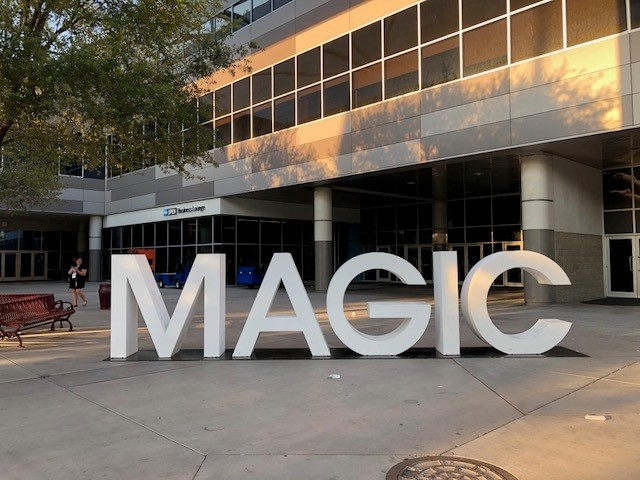
Web Developers
The Coresight Research team is attending MAGIC Las Vegas 2018, one of the most comprehensive trade shows covering men’s, women’s and children’s apparel, accessories and footwear. The event also features education programs where industry experts share insights and information on global industry trends in topic areas including manufacturing, sourcing, branding, technology and sustainability.
Our team attended sessions led by industry experts and met brand owners to discover the newest trends and products. Here are our top takeaways from day one of the show:
1. The footwear market has returned to growth, fueled by the “sport leisure” and “fashion” categories. In the “Mid-year Market Review: Five Themes Defining Footwear & Beyond” in 2018,” Beth Goldstein, Executive Director and Industry Analyst, NPD Group, said the total footwear market has reached a new peak in annual dollar volume of $70.7 billion, as of June, 2018, and is growing at 4% year over year compared to the prior year. All footwear categories are more positive than last year, and the two categories comprising the most growth include “sports leisure,” which includes sneakers, and “fashion.”
2. Alibaba.com, the company’s B2B platform, helps individuals to find and source products globally, at all price ranges. The platform currently has over 10 million active buyers from over 200 countries. Sara Ma, Global Marketing Director, Alibaba.com, presented “Global Trends, Fashion & Apparel Industry,” a session on how Alibaba is connecting businesses on its B2B platform, Alibaba.com. Ma presented an overview of Alibaba.com, a global cross-border marketplace platform whose roots are in sourcing and helping small and medium-sized entrepreneurs to find companies and manufacturers. Today, Ma said that Alibaba’s mission is still the same as when the company was first founded, and that sourcing remains the company’s heritage. However, many consumers may not be aware of its Alibaba.com services, as they are more familiar with its customer-facing businesses Tmall and Taobao. Alibaba.com’s platform aims to provide an opportunity for entrepreneurs to find and source products that they are looking for, within a price range that is manageable. Ma said that one of the main goals of Alibaba.com is to alleviate the friction points that individuals have when they are trying to find products, and to provide opportunities and choices for individuals when they are looking for products by removing global barriers and price barriers. The ultimate goal is for individuals to be able to buy, build, create and launch their own brands or businesses. Alibaba.com has over 10 million active buyers spanning 40 major categories in over 200 countries and regions.
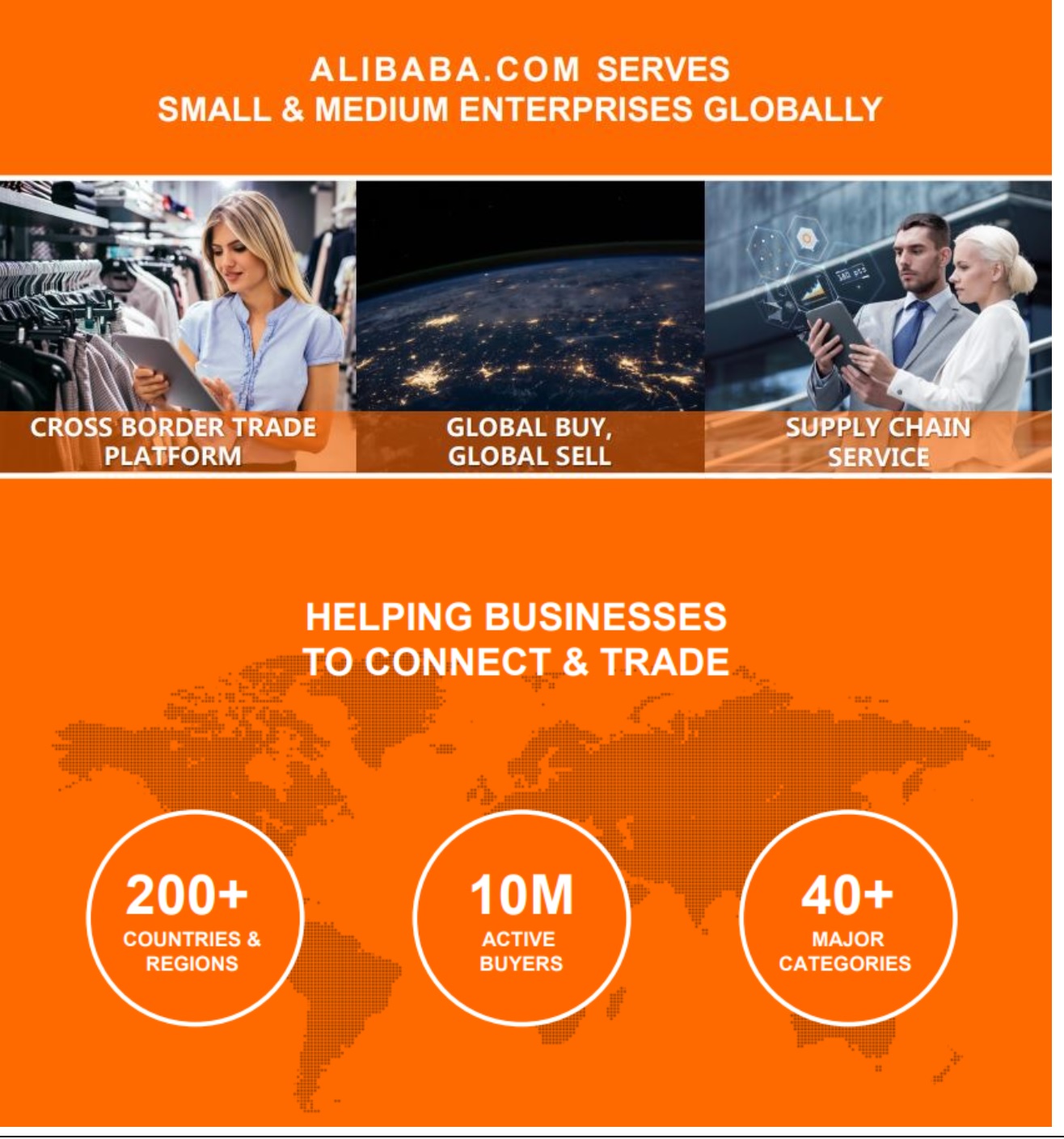
4. Thr3efold is a new tech supply-chain platform that helps companies find ethical factories and manage production in one place. Founder and CEO Jessica Kelly started Thr3efold to simplify the production process for designers and brands of all sizes, and to connect them with trusted garment and accessory factories to create goods. With high demand in knitwear and athleticwear, Thr3efold work with factories in Bangladesh, India, Nepal, South Africa and Peru. Kelly said the communication goes both ways too, meaning that designers are looking for factories and factories are looking for designers. Thr3efold is finding that there are many qualified and ethical factories that want to work with brands and designers, but these factories do not know how to reach consumers. The platform aims to provide a community for designers and brands to share experiences. Kelly said that designers and brands were interested in learning about the experiences of others. The company is launching a private portal for “deadstock fabric” on its site for brands that want to source or sell excess fabric.
5. “Purchase-activated fulfilment” is the next generation of manufacturing. On the panel, “Innovations: Movers and Shakers: The Endless Aisle Concept for Fashion” Bill Grier, CEO/CTO, AM4U, Inc. and Critical Mass, asked, “Why don’t we sell first, then build? That way we can create products that people want.” Grier created a virtual endless aisle where consumers can take advantage of virtual inventory. Grier designed the virtual aisle concept as a temporary opportunity for a retailer around a themed event, such as back to school, for example. An endless aisle can be built in 15 minutes. Grier said that a warehouse of 100,000 square feet of inventory will fit on 1 terabyte of data to showcase in a virtual showroom. Grier suggested that this takes the guesswork out of what customers want and will help to eliminate overproducing. It also promotes better designs.
6. In order for brands or retailers to adopt digital technology, they will have to feel some pain first. Panelists on the panel, “Innovations: Movers and Shakers: The Endless Aisle Concept for Fashion,” agreed that the apparel industry has not seen any significant change or advancement, like most other industries, and that when it comes, the change will be dramatic, comparing it to the invention of the car in terms of how profound the change will be. Panelist, Bill Grier, CEO/CTO, AM4U, said that brands will not adopt the technology until they feel the pain in terms of the bottom line, because right now, unless there is an impetus to change, most brands are too concerned about trying to meet deadlines.
7. Microfactories are not just for on-demand production; they are being used in the sample room. Microfactories are expanding beyond the on-demand format that most people associate them with, and brands and designers are using them as part of sample rooms or even for small production runs. The microfactory allows for full-service pattern layout, printing, cutting and sewing, all in one small designated area.
8. Innovative alternative materials are driving footwear designs. In the “Mid-year Market Review: Five Themes Defining Footwear & Beyond in 2018,” Beth Goldstein, Executive Director and Industry Analyst, NPD Group, said that the pace of innovation is picking up in footwear, and that footwear brands are using alternative materials to drive innovation. For example, startups are testing mushroom fibers and food waste to produce wearable fibers.
9. Consumers are specific about which sustainability message they care about, and go deep on that issue. Sara Iravani, CEO, Okabashi, a flip-flop manufacturer in Buford, Georgia, said that sustainability is a very complex issue. There are many ways to be sustainable, and there is no gold standard of sustainability. Iravani said that not all consumers want the same story around sustainability, and consumers are specific about which aspects of sustainability they will follow, and will “go deep” on those issues. She said sustainability is not just a narrative that the company adds onto its messaging, but it is part of the company’s business model. For example, Okabashi was founded in 1984, and the company has been “sustainable before sustainability was a thing.” She said that it uses scraps and that 20%–25% of the shoes are made from recycled materials. The company participates in Soles 4 Soles, a nonprofit dedicated to creating sustainable jobs, that provides relief through the distribution of shoes and clothing around the world. This is all part of the company’s heritage and was not something that the company decided to do one day. Iravani said that being authentic and transparent are important parts of sustainability, because customers know what they want and what they care about.
10. “Comfort” is the new normal footwear. Beth Goldstein, Executive Director and Industry Analyst, NPD Group, shared her belief that comfort is not just a fad, but is the new normal in terms of societal preferences and how consumers want to live and feel, which will inform footwear and apparel choices.
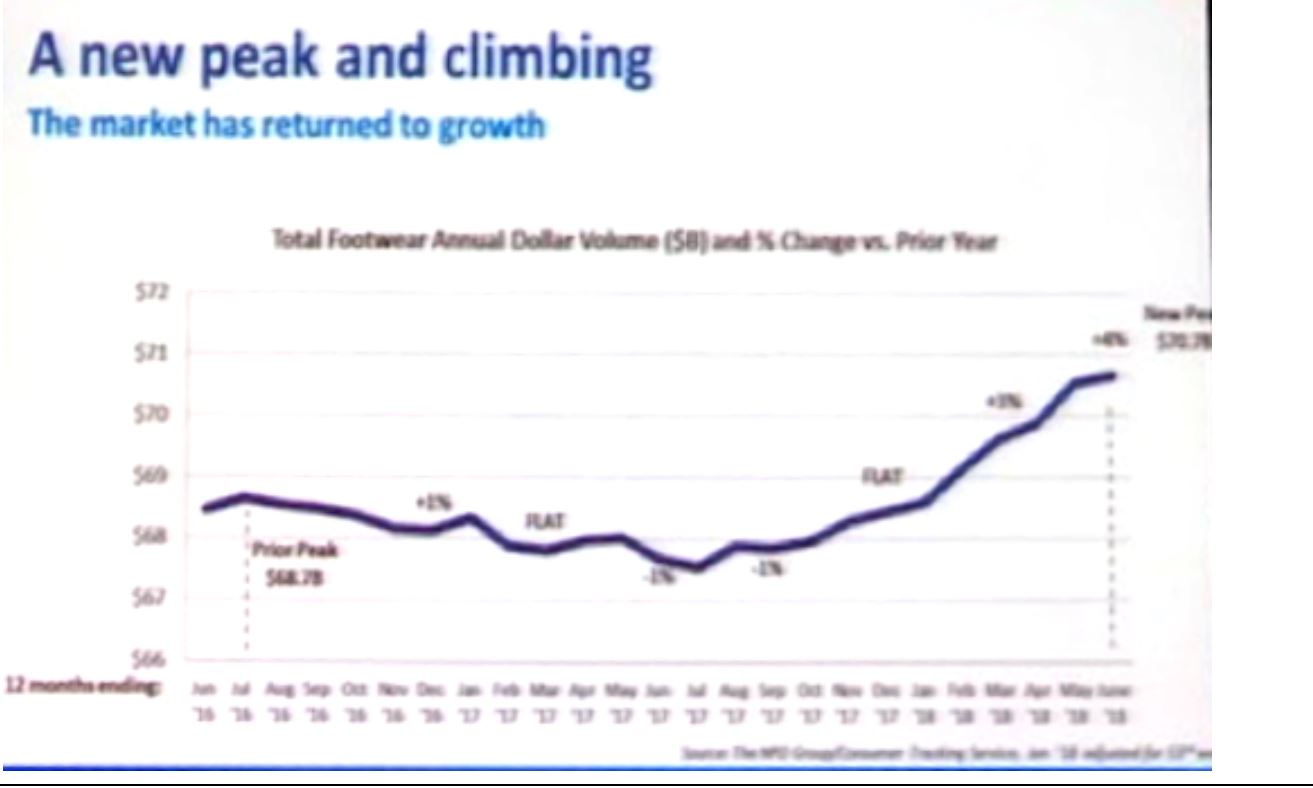 Mid-year Market Review: Five Themes Defining Footwear & Beyond in 2018 Slide at MAGIC Las Vegs 2018.
Source: Coresight Research
Mid-year Market Review: Five Themes Defining Footwear & Beyond in 2018 Slide at MAGIC Las Vegs 2018.
Source: Coresight Research
 Mid-year Market Review: Five Themes Defining Footwear & Beyond in 2018 Slide at MAGIC Las Vegas 2018.
Source: Coresight Research
Mid-year Market Review: Five Themes Defining Footwear & Beyond in 2018 Slide at MAGIC Las Vegas 2018.
Source: Coresight Research
2. Alibaba.com, the company’s B2B platform, helps individuals to find and source products globally, at all price ranges. The platform currently has over 10 million active buyers from over 200 countries. Sara Ma, Global Marketing Director, Alibaba.com, presented “Global Trends, Fashion & Apparel Industry,” a session on how Alibaba is connecting businesses on its B2B platform, Alibaba.com. Ma presented an overview of Alibaba.com, a global cross-border marketplace platform whose roots are in sourcing and helping small and medium-sized entrepreneurs to find companies and manufacturers. Today, Ma said that Alibaba’s mission is still the same as when the company was first founded, and that sourcing remains the company’s heritage. However, many consumers may not be aware of its Alibaba.com services, as they are more familiar with its customer-facing businesses Tmall and Taobao. Alibaba.com’s platform aims to provide an opportunity for entrepreneurs to find and source products that they are looking for, within a price range that is manageable. Ma said that one of the main goals of Alibaba.com is to alleviate the friction points that individuals have when they are trying to find products, and to provide opportunities and choices for individuals when they are looking for products by removing global barriers and price barriers. The ultimate goal is for individuals to be able to buy, build, create and launch their own brands or businesses. Alibaba.com has over 10 million active buyers spanning 40 major categories in over 200 countries and regions.

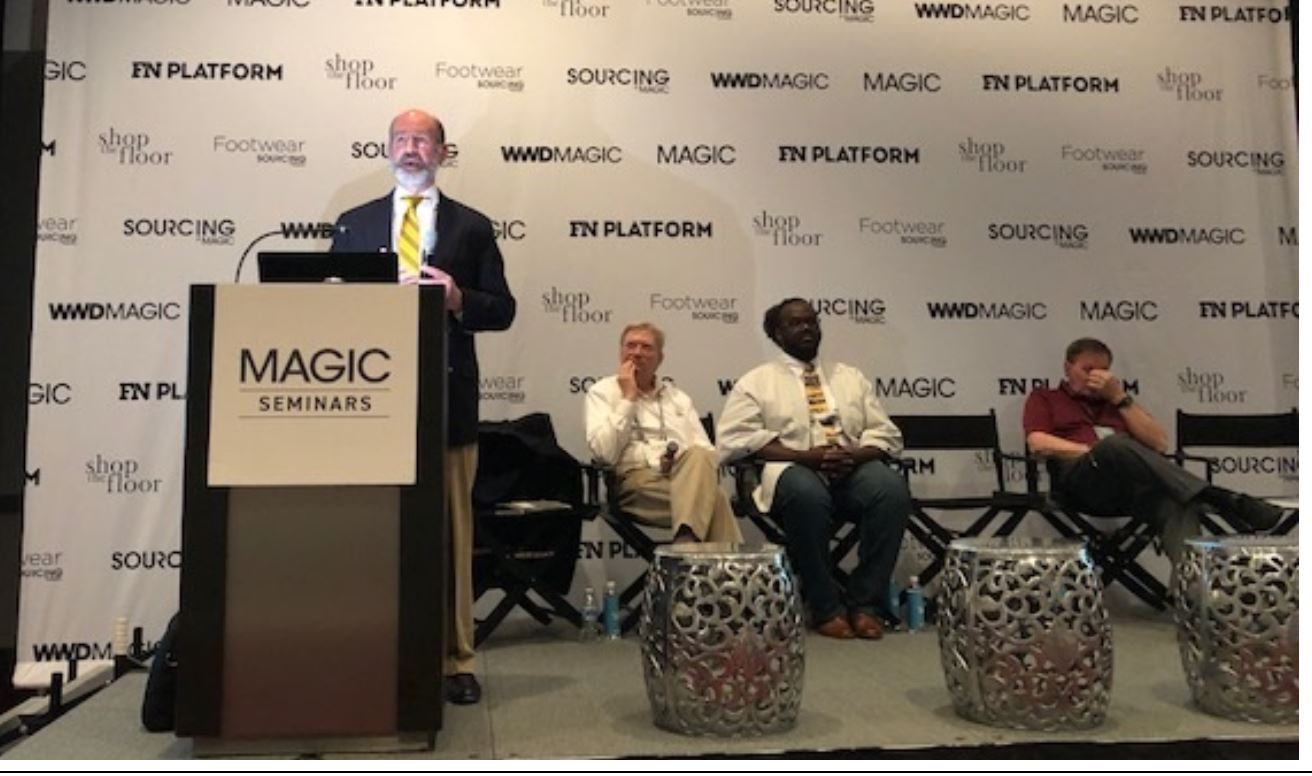 Innovations: Movers and Shakers: The Endless Aisle Concept for Fashion
Source: Coresight Research
Innovations: Movers and Shakers: The Endless Aisle Concept for Fashion
Source: Coresight Research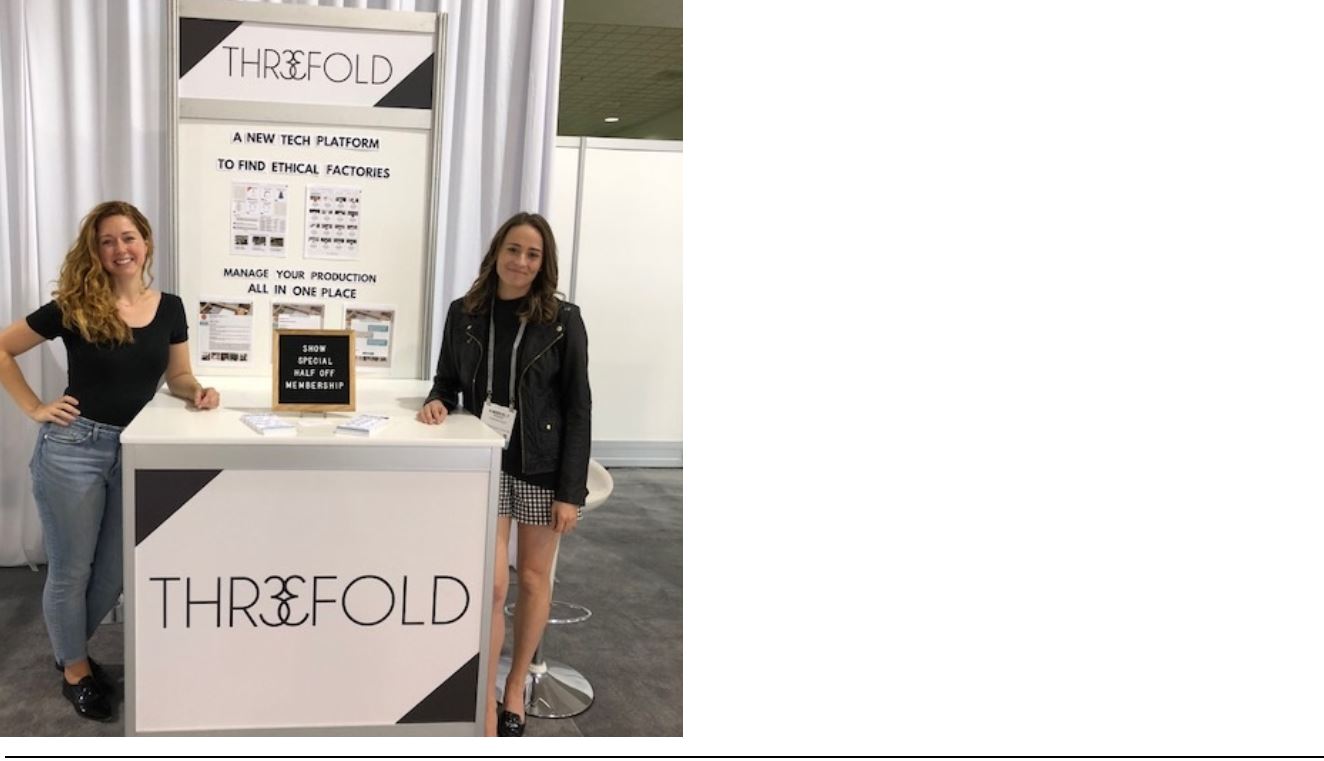 Thr3efold
Source: Coresight Research
Thr3efold
Source: Coresight Research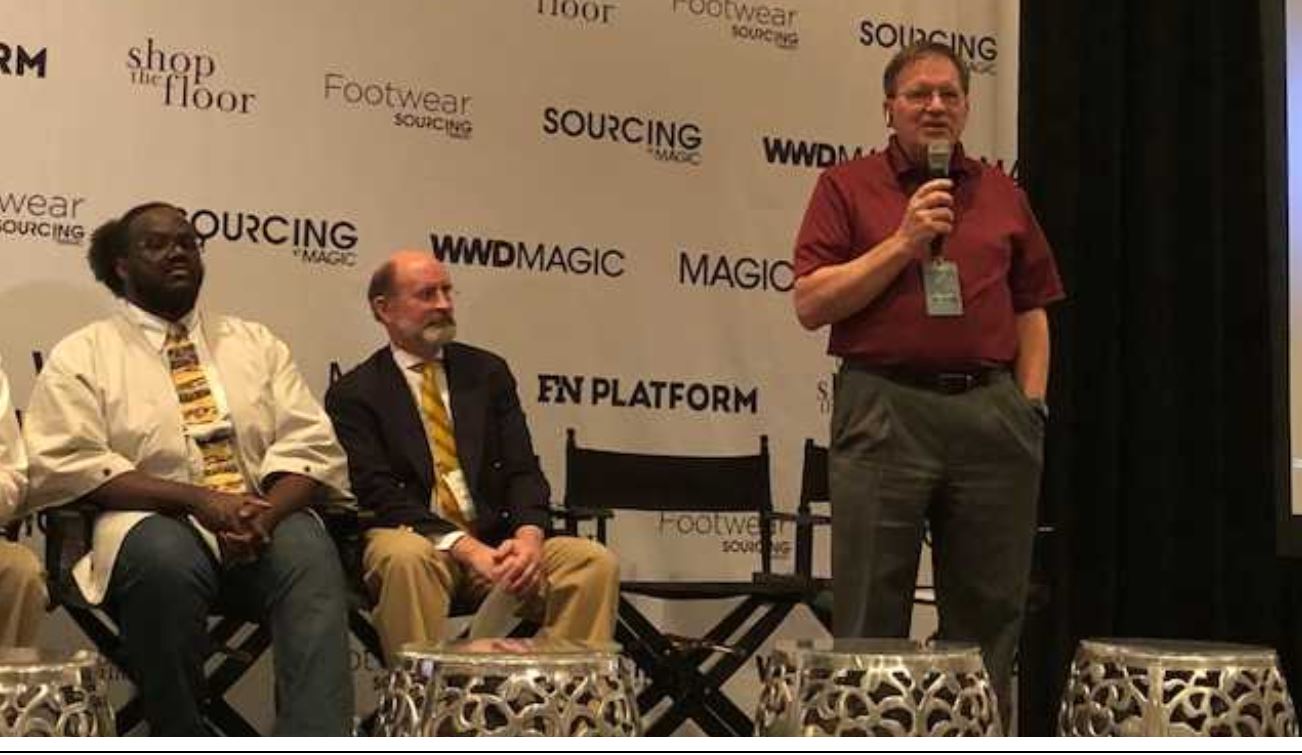 Innovations: Movers and Shakers: The Endless Aisle Concept for Fashion
Source: Coresight Research
Innovations: Movers and Shakers: The Endless Aisle Concept for Fashion
Source: Coresight Research Tukatech cut and sew pattern
Source: Coresight Research
Tukatech cut and sew pattern
Source: Coresight Research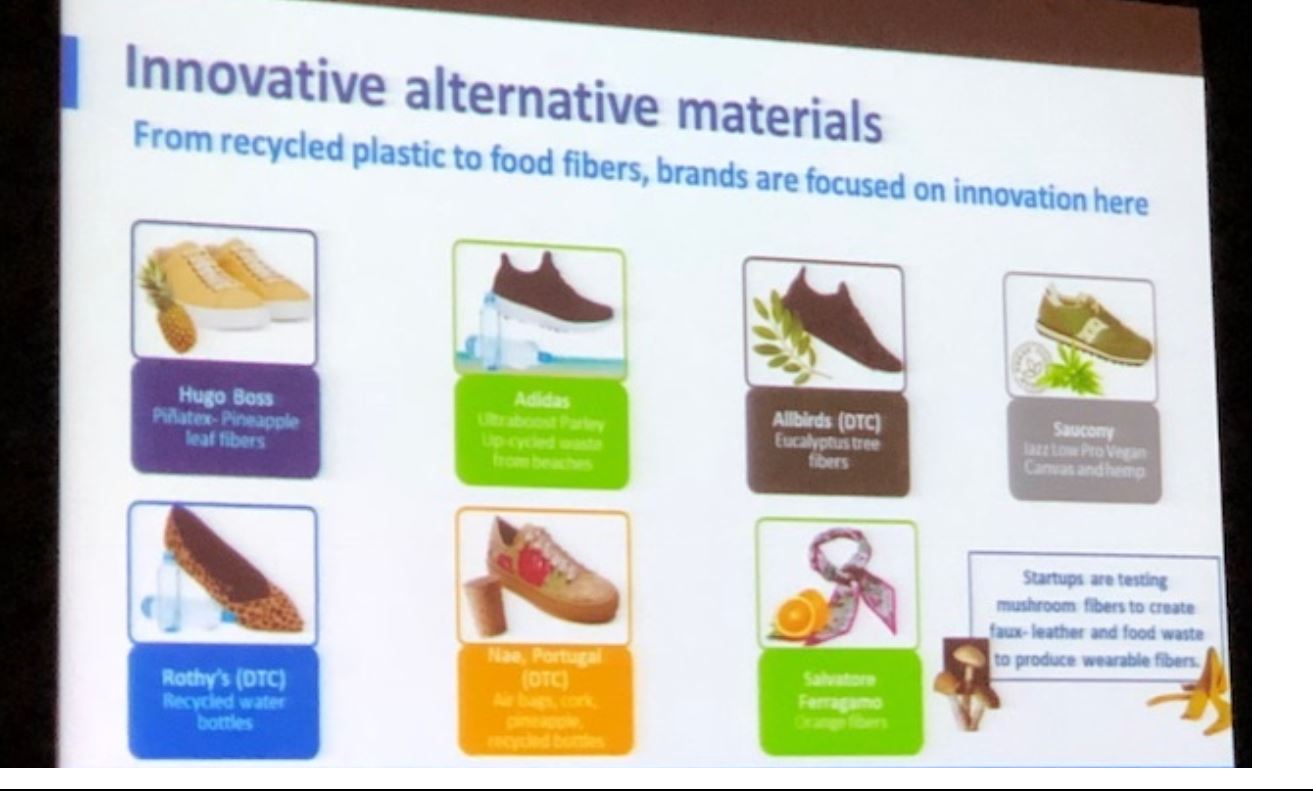 NPD Slide: Five Themes Defining Footwear & Beyond in 2018, a beauty concept store
Source: Coresight Research
NPD Slide: Five Themes Defining Footwear & Beyond in 2018, a beauty concept store
Source: Coresight Research